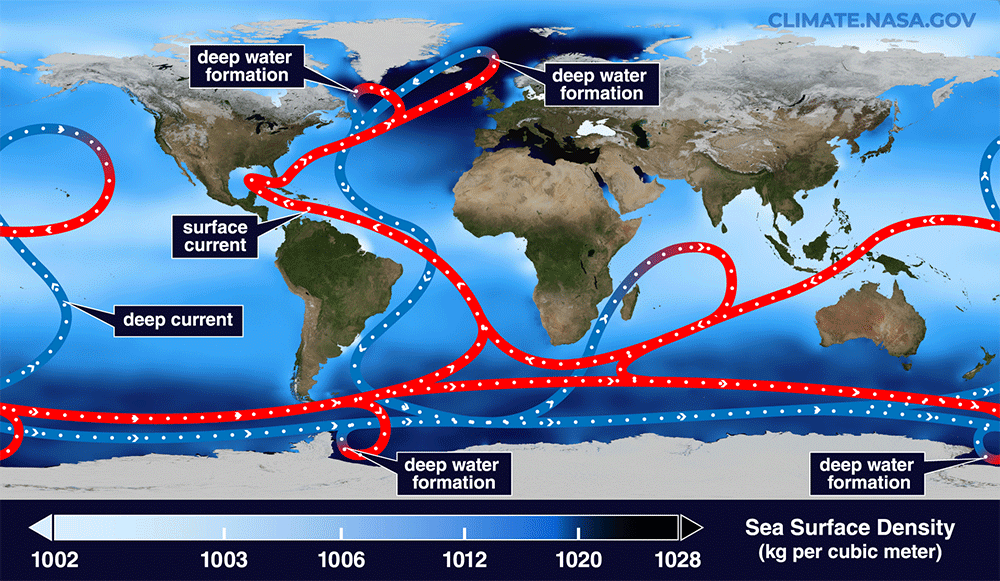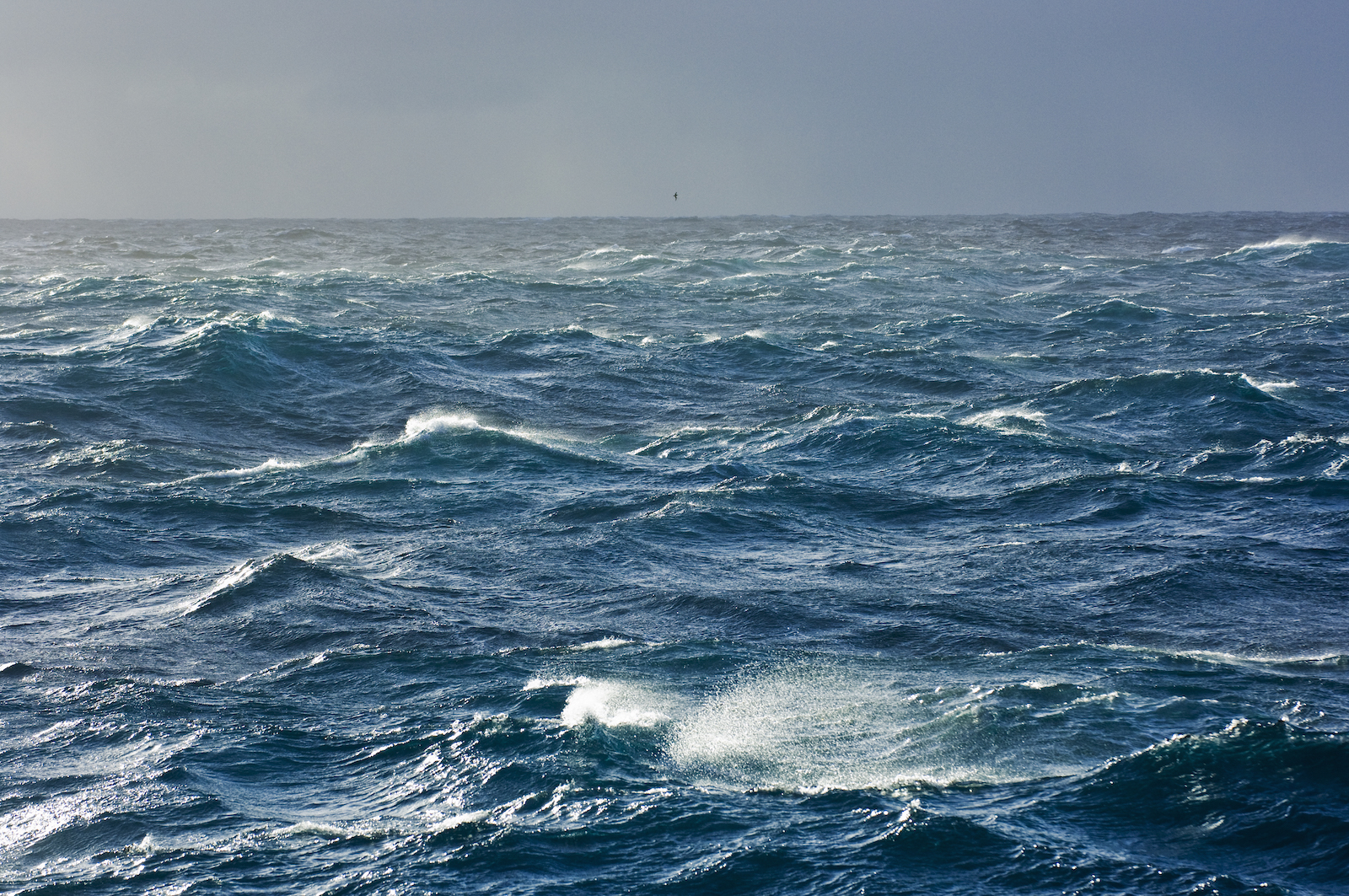
A vital ocean current system that helps regulate the Northern Hemisphere's climate could collapse anytime from 2025 and unleash climate chaos, a controversial new study warns.
The Atlantic Meridional Ocean Current (AMOC), which includes the Gulf Stream, governs the climate by bringing warm, tropical waters north and cold water south.
But researchers now say the AMOC may be veering toward total breakdown between 2025 and 2095, causing temperatures to plummet, ocean ecosystems to collapse and storms to proliferate around the world. However, some scientists have cautioned that the new research comes with some big caveats.
The AMOC can exist in two stable states: a stronger, faster one that we rely upon today, and another that is much slower and weaker. Previous estimates predicted that the current would probably switch to its weaker mode sometime in the next century.
Related: Gulf Stream could be veering toward irreversible collapse, a new analysis warns
But human-caused climate change may push the AMOC to a critical tipping point sooner rather than later, researchers predicted in a new study, published Tuesday (July 25) in the journal Nature Communications.
"The expected tipping point — given that we continue business as usual with greenhouse gas emissions — is much earlier than we expected," co-author Susanne Ditlevsen, a professor of statistics and stochastic models in biology at the University of Copenhagen, told Live Science.
"It was not a result where we said: 'Oh, yeah, here we have it'. We were actually bewildered."
AMOC as a global conveyor belt
Atlantic Ocean currents work like an endless global conveyor belt moving oxygen, nutrients, carbon and heat around the globe. Warmer southerly waters, which are saltier and denser, flow north to cool and sink below waters at higher latitudes, releasing heat into the atmosphere.
Then, once it has sunk beneath the ocean, the water slowly drifts southward, heats up again, and the cycle repeats. But climate change is slowing this flow. Fresh water from melting ice sheets has made the water less dense and salty, and recent studies have shown that the current is at its weakest in more than 1,000 years.

The region near Greenland where the southerly waters sink (known as the subpolar gyre) borders a patch that is hitting record low temperatures, while the surrounding seas climb to all-time highs, forming an ever-expanding 'blob' of cold water.
The last time the AMOC switched modes during the most recent ice age, the climate near Greenland increased by 18 to 27 degrees Fahrenheit (10 to 15 degrees Celsius) within a decade. If it were to turn off, temperatures in Europe and North America could drop by as much as 9 F (5 C) in the same amount of time.
Direct data on the AMOC's strength has only been recorded since 2004, so to analyze changes to the current over longer timescales, the researchers turned to surface temperature readings of the subpolar gyre between the years of 1870 and 2020, a system which they argue provides a 'fingerprint' for the strength of AMOC’s circulation.
By feeding this information into a statistical model, the researchers gauged the diminishing strength and resilience of the ocean current by its growing year-on-year fluctuations.
The model's results alarmed the researchers — yet they say that checking them only reinforced their findings: The window for the system's collapse could begin as early as 2025, and it grows more likely as the 21st century continues.
"I don't consider myself very alarmist. In some sense it's not fruitful," Peter Ditlevsen, a professor of physics and climate science at the Niels Bohr Institute in Copenhagen, told Live Science. "So my result annoys me, in some sense. Because it [the window for possible collapse] is so close and so significant that we have to take immediate action now."

Controversy over the predicted collapse
Oceanographers and climate experts have said that while the study provides a worrying warning, it comes with some big uncertainties.
"If the statistics are robust and are a correct/relevant way to describe how the actual modern AMOC behaves, and the changes relate (solely) to changes in the AMOC, then this is a very concerning result," David Thornalley, a professor of ocean and climate science at University College London, told Live Science in an email. "But there are some really big unknowns and assumptions that need investigating before we have confidence in this result."
Other climate scientists have gone so far as to pour cold water on the findings, suggesting it is "wholly unclear" that observed surface temperature evolution of AMOC can be linked to the strength of its circulation.
"While the mathematics seem expertly done, the physical foundation is extremely shaky: It rests on the assumption that the collapse shown by simplified models correctly describes reality — but we simply do not know, and there is no serious discussion of these simplified models' shortcomings,'' Jochem Marotzke, a professor of climate science and the director of the Max Planck Institute for Meteorology in Hamburg, told Live Science in an email. "Hence, while the paper might be a valid 'what if' exercise in time series analysis in a specialized journal, it falls way short of its self-proclaimed goal of estimating the evolution of the circulation solely from observations."
The researchers behind the new study say their next steps will be to update their model with data from the last three years, which should narrow their window for predicted collapse.







